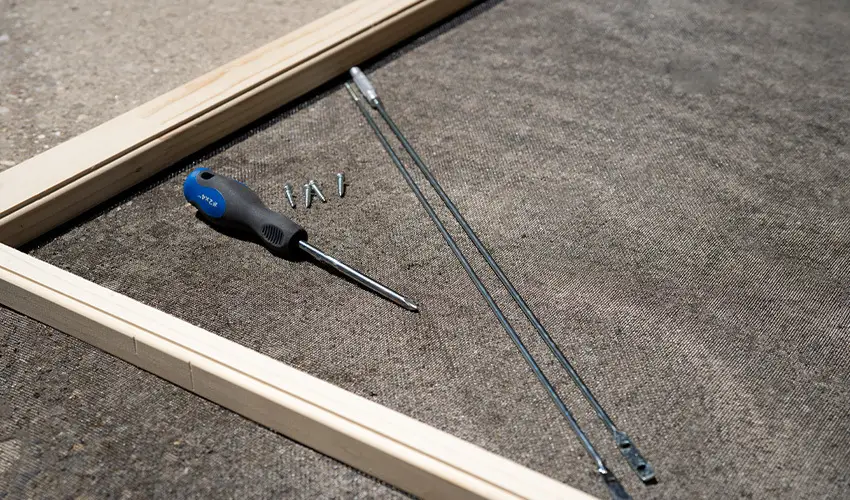How to Fix a Sagging Wooden Screen Door
Last Edited: 9/15/23
Have you noticed your wooden screen door dragging on the floor? Are you looking to get it fixed? If so, you're in the right place. In this blog, we’ll give you some useful tips for getting your sagging wooden screen door back in working order.
Let’s start by taking a look at some of the most common causes of a sagging door:
What Causes a Screen Door to Sag?
- Misaligned striker and latch: If your door is only sagging slightly, the striker and latch may not be lined up correctly. This can be a simple fix: tighten the hinge screws with a screwdriver.
- Wear and tear: Sometimes a door suffers from daily use over time. Depending on the damage, it may be easier to replace the door completely rather than repair it. Some wooden screen doors may be rotted, warped, or splintered. In this case, you’re better off replacing the door.
- Hot weather: Hot weather can cause a door to expand, particularly if it’s made of wood. If your door is regularly exposed to heat, this is the likely cause of the sag. It may help to paint the door a lighter color to prevent this from happening.
How to Keep Wood Screen Door from Sagging
If your screen door is sagging, you’ll need three items to fix it: a turnbuckle, a drill (and the necessary bits), and a tape measure.
A turnbuckle is a metal brace that reinforces the door. It is installed from top to bottom diagonally across the width of the door. Turnbuckles come in two different sizes: 42 inches for doors less than 36 inches wide and 50-inch turnbuckles for doors 36 inches or wider. Make sure you have the correct-size turnbuckle for your door and the correct parts for your drill.
Step One: Assemble your turnbuckle by threading the rods into each end of the coupling nut. As the rods are threaded at separate ends, the coupling nut will tighten or loosen both rods at the same time. Make sure you leave plenty of threads showing to give room to tighten later on.
Step Two: Position the turnbuckle two inches above the door’s bottom corner on the handle side. Slant the turnbuckle upward, holding it against the hinge side of the door. Make sure the turnbuckle is flush against the screen door to ensure it doesn’t interfere with the door’s function. Once the turnbuckle is in place, mark the screw holes on the screen door.
Step Three: Drill pilot holes where you’ve marked the spots, make sure they are smaller than the screws provided. Install the turnbuckle using the screws and tighten all the screws once they’re in place.
Step Four: Turn the coupling nut on the turnbuckle; this will tighten the rod and lift the sagging corner. Adjust the turnbuckle until the door is level. If the coupling nut on the turnbuckle becomes difficult to turn, use a pair of pliers or a wrench for the final turns.
Once this is complete, the sag should be alleviated.
Do the Hinges Need Replacing?
If these steps don’t fix your door sag, the door hinges may need replacing. Hinges and screws can become rusted over time and stop supporting a door as they should. To do this, you’ll need to purchase some replacement hinges.
Once you have the hinges, remove the screws on both leaves of the existing hinge and remove and replace the old hinge with the new hinge. Screw the new hinge into place and repeat the process for each remaining hinge, one at a time. You may need to use different holes for the hinge screws to alleviate the sag.
Professional Door Repair Services
If these solutions don’t fix your door problem, the door may require professional maintenance or a replacement door may be needed. For professional door service, give the expert carpenters at your local Mr. Handyman a call or request a service online today.
 Click to call
Click to call


